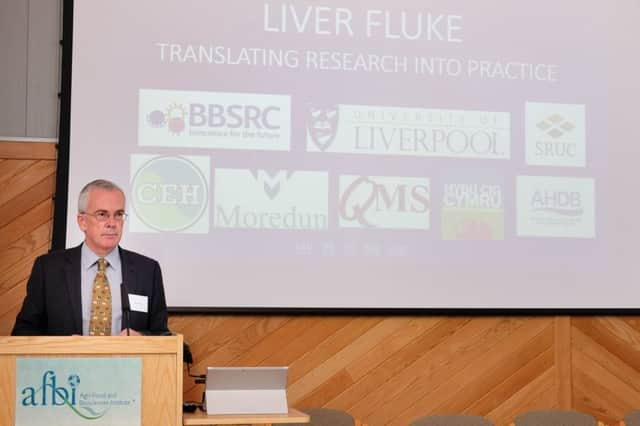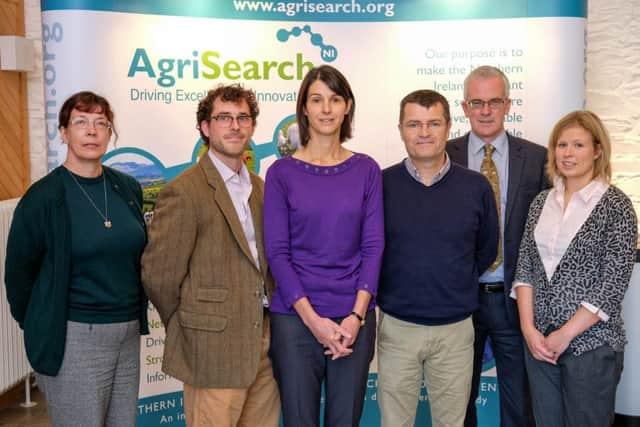Best practice for dealing with liver fluke


This featured the preliminary findings of a large scale research project on liver fluke, which is funded by BBSRC (Biotechnology and Biological Sciences Research Council) and the UK research and development (R&D) levy bodies.
The seminar highlighted the cost of liver fluke, options for diagnosis, the importance of using the right amount of the right product at the right time and best practice for grazing and land management to avoid the spread of fluke from cattle to the snail and vice-versa.
Advertisement
Hide AdAdvertisement
Hide AdMary Vickers from AHDB (Agriculture and Horticulture Development Board) introduced ‘COWS’ (Control of Worms Sustainably). COWS aims to provide the best available, evidence-based information to the cattle industry in relation to the sustainable control of parasites in cattle. It is run and funded by a core group of stakeholders (which includes AgriSearch). A wide range of resources can be found at the COWS website www.cattleparasites.org.uk.


Mary Vickers highlighted the five R’s for the effective use of wormers.
l The right product for the right type of worm;
l The right animal;
l The right time;


l The right dose rate;
l Administered in the right way.
Philip Skuce, from Moredun Research Institute, highlighted the increased prevalence of liver fluke across the British Isles. This is due to a number of factors such as climate change, drug resistance, increased animal movements and agri-environment schemes.
While a full economic impact assessment is currently being carried out as part of the project, previous estimates from AHDB had indicated a cost of £25-£30 per head of sheep and £90 per head of cattle. Mr Skuce outlined the four-point control plan for liver fluke:
Pasture protection – don’t let the snails get infected
Advertisement
Hide AdAdvertisement
Hide AdReduce snail population – drainage, topping rushes, improving poached areas etc.
Avoid high cyst challenge – graze animals away from known / suspected high fluke areas.
Strategic treatment of ‘at risk’ animals – treat right animals, at right time, with appropriate product.
Mr Skuce also highlighted the options open to farmers for diagnosing liver fluke. These include post mortem/meat inspection (available through APHIS), blood sample for liver enzymes or anti-fluke antibodies, clinical signs, bulk tank milk ELISA and faecal egg count.
Advertisement
Hide AdAdvertisement
Hide AdNicola Beesley, from Liverpool University, spoke on the role of the Galba Trucatula snail in the liver fluke life cycle and where these snails are typically found. She outlined the ongoing research being conducted on snails, including a field study on 40 farms in Shropshire.
Referring to means of preventing or limiting liver fluke infection in cattle, she recommended fencing off snail habitats, avoiding wet pasture during fluke season (September/October); fixing water leaks promptly to avoid temporary habitats establishing; ploughing, reseeding or crop rotation of heavily grazed areas and where possible to drain wet areas (depending on your agri-environmental status).
Finally, John Graham-Brown, also from Liverpool University, spoke on the impact of liver fluke on cattle health. Each day one adult fluke drinks ½ ml of blood and produces tens of thousands of eggs.
In cattle the effects of liver fluke are often sub-clinical and often go undiagnosed. Infection can result in liver condemnation (around 500,000 livers were condemned in the UK in 2010), weight loss or poor growth, reduced milk yield (8-15% overall reduction), impaired fertility and altered immune response to other diseases.
Copies of the conference presentations can be downloaded from the AgriSearch website www.agrisearch.org